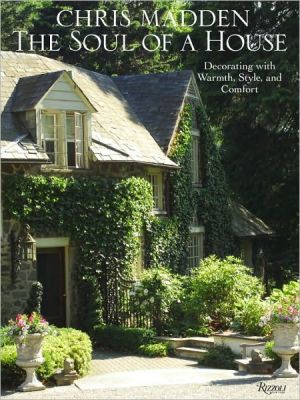Landscape Planning: Environmental Applications
With its wide variety of topics and up-to-date coverage, the fifth edition is an excellent resource for landscape planners and designers, scientists, and environmentalists. It focuses on environmental problems associated with land planning, landscape design, and land use. New coverage is included on adaptive planning as an approach necessary to build a sustainable landscape. Greater emphasis is placed on systems and updated case studies are integrated throughout the chapters. This edition...
Search in google:
With its wide variety of topics and up-to-date coverage, the fifth edition is an excellent resource for landscape planners and designers, scientists, and environmentalists. It focuses on environmental problems associated with land planning, landscape design, and land use. New coverage is included on adaptive planning as an approach necessary to build a sustainable landscape. Greater emphasis is placed on systems and updated case studies are integrated throughout the chapters. This edition also arms the reader with a collection of best management practices, which can be applied in the field.BooknewsSuggests to students of physical geography, planning, and landscape architecture how the three disciplines relate to environmental problems and issues. The second edition (first in 1983) takes account of the growing permeability between fields, shifts of attention to new applications, and comments by students and instructors on the first edition. Accessible to nonspecialists. Annotation c. Book News, Inc., Portland, OR (booknews.com)
PrefaceAn Introduction to the Book, the Field, and Some Perspectives 10.1 Opening Statement 20.2 Background Concept 20.3 Content and Organization 30.4 Landscape Planning, Environmentalism, and Environmental Planning 40.5 The Spatial Context: Sites and Regions 50.6 Finding the Appropriate Scale 50.7 The Sustainable Systems Dilemma 70.8 Case Study: Building Sustainable Communities on Sustainable Landscape Systems 90.9 Selected References for Further Reading 10Chapter 1 Landscape Planning: Roots, Problems, and Content 131.1 Introduction: Roots 141.2 The Problem: Change and Impact 171.3 The Purpose of Planning 191.4 Planning Realms: Decision Making, Technical, and Design 191.5 Environmental Impact Assessment 201.6 Areas of Activity in Landscape Planning 221.7 Methods and Techniques 271.8 Environmental Ordinances (Bylaws) 281.9 The Planning Professions and Participating Fields 291.10 Case Study: Adapting the EIS to Issues of Natural Gas Drilling in New York State 311.11 Selected References for Further Reading 34Chapter 2 The Physiographic Framework of the United States and Canada 352.1 Introduction 362.2 The Physiographic Framework 362.3 The Canadian Shield 392.4 The Appalachian Region 422.5 The Interior Highlands 462.6 The Atlantic and Gulf Coastal Plain 472.7 The Interior Plains 512.8 The Rocky Mountain Region 552.9 The Intermontane Region 572.10 The Pacific Mountain Region 602.11 The Yukon and Coastal Arctic Region 632.12 Selected References for Further Reading 64Chapter 3 Landscape Form and Function in Planning and Design 673.1 Introduction 683.2 Essential Systems and Processes of the Landscape 683.3 The Nature of Landscape Change 703.4 The Concept of Conditional Stability 723.5 Perspectives on site as Landscape 733.6 Dimensions of the Site as Dynamic Space 743.7 Sources of Environmental Data for Site Planning 773.8 Theoretical Perspectives on Landscape 793.9 Case Study: Dams, Sustaining streamflow, and Landscape Equilibria: An Illustration from Fossil Greek, Arizona 853.10 Selected References for Further Reading 89Chapter 4 Topography, Slopes, and Land Use Planning 914.1 Introduction 924.2 The Nature of Slope Problems 924.3 Building Slope Maps for Land Use Planning 944.4 Interpreting Slope Steepness and Form 974.5 Assessing Slopes for Stability 1004.6 Applications to Community Planning 1044.7 Why Slope Maps May Not Work in Some Areas 1064.8 Case Study: Slope as a Growth-Control Tool in Community Planning 1084.9 Selected References for Further Reading 109Chapter 5 Assessing Soil for Land Use Planning and Waste Disposal 1115.1 Introduction 1125.2 Soil Composition 1125.3 Soil Texture 1135.4 Soil Moisture and Drainage 1145.5 Soil, Landforms, and Topography 1165.6 Applications to Land Planning 1205.7 Planning Considerations in Solid Waste Disposal 1225.8 Hazardous Waste Regulation and Disposal 1265.9 Case Study: Mapping Soil at the Site Scale for Private Development 1275.10 Selected References for Further Reading 129Chapter 6 Site, Soils, and Wastewater Disposal Systems 1316.1 Introduction 1326.2 The Soil-Absorption System 1326.3 Environmental Impact and System Design 1356.4 Mapping Soil Suitability for On-Site Disposal 1366.5 Alternatives to Standard SAS 1396.6 Small-Flow Wetland Systems 1426.7 Case Study: Land Use Implications of On-Site Wastewater Treatment Technologies: Lessons from the Great Lakes Region 1436.8 Selected References for Further Reading 146Chapter 7 Groundwater Systems, Land Use Planning, and Aquifer Protection 1477.1 Introduction 1487.2 Groundwater Sources and Features 1487.3 Groundwater as a Flow System 1517.4 Groundwater Withdrawal and Aquifer Impact 1557.5 Sources of Groundwater Contamination 1577.6 Applications to Landscape Planning and Design 1587.7 Community Wellhead Protection 1627.8 Case Study: GIS and the Management of Groundwater Contamination 1637.9 Selected References for Further Reading 165Chapter 8 Runoff and Stormwater Management in a Changing Landscape 1678.1 Introduction 1688.2 Runoff as Overland Flow 1688.3 Computing Runoff from a Small Watershed 1708.4 Using the Rational Method 1748.5 Other Runoff Models and Concepts 1758.6 Trends in Stormwater Discharge 1778.7 Stormwater Mitigation in Development Planning and Design 1798.8 The Concept of Performance 1848.9 Comprehensive Water Management Planning 1858.10 Case Study: A Case for Green Infrastructure in Stormwater Management, Surrey, British Columbia 1868.11 Selected References for Further Reading 188Chapter 9 Watersheds, Drainage Nets, and Land Use Planning 1919.1 Introduction 1929.2 The Organization of Networks and Basins 1929.3 Mapping the Drainage Basin 1959.4 Land Use Alterations of Small Drainage Basins 1969.5 Watershed Planning and Management Considerations 1999.6 Framing a Plan for the Small Drainage Basin 2039.7 Case Study: Watershed Concepts Applied to Industrial Site Management, Saltillo, Mexico 2049.8 Selected References for Further Reading 208Chapter 10 Streamflow, Floodplains, Flood Hazard, and Land Use Planning 20910.1 Introduction 21010.2 Sources of Streamflow 21010.3 Methods of Forecasting Streamflow 21310.4 The Size and Shape of Valleys and Floodplains 21710.5 Applications to Land Planning and Design 21910.6 Small Basin Floodplain Mapping 22210.7 Case Study: Flood Risk and the Impacts of Fire in a Small Forested Watershed, Northern Arizona 22410.8 Selected References for Further Reading 227Chapter 11 Water Quality and Runoff Considerations in Landscape Management 22911.1 Introduction 23011.2 Pollution Types, Sources, and Measurement 23011.3 Stormwater, Land Use, and Water Quality 23311.4 Water Quality Mitigation on Land 23511.5 Eutrophication of Waterbodies 23811.6 Lake Nutrient Loading and Land Use 24111.7 Planning for Water Quality Management in Small Watersheds 24411.8 Case Study: Sediment and Nutrient Trapping Efficiency of a Constructed Wetland Near Delavan Lake, Wisconsin 24811.9 Selected References for Further Reading 250Chapter 12 Soil Erosion, Stream Sedimentation, and Landscape Management 25312.1 Introduction 25412.2 Soil Erosion, Bioclimate, and Land Use 25412.3 The Soil Erosion-Sediment Transport System 25712.4 Principal Factors Influencing Soil Erosion 26012.5 Computing Soil Erosion from Runoff 26212.6 Applications to Landscape Planning and Management 26512.7 Watershed Management Considerations 26812.8 Case Study: Erosion and Sediment Control on a Creek Restoration project, South Lake Tahoe, California 27112.9 Selected References for Further Reading 273Chapter 13 Best Management Practices, Local Watersheds, and Development Sites 27513.1 Introduction 27613.2 The Watershed Runoff System and BMP Opportunities 27613.3 The Site-Scale Stormwater System 27913.4 Production BMPs 28013.5 Site Removal (Release) BMPs 28313.6 Delivery BMPs 28413.7 An Approach to BMP Planning 28413.8 Toward Green Infrastructure 28613.9 Case Study: Making the Shift to On-Site BMPs: Rainwater Management on a Small Urban Site 28813.10 Selected References for Further Reading 291Chapter 14 The Riparian Landscape: Streams, Channel Forms, and Valley Floors 29314.1 Introduction 29414.2 Hydraulic Behavior of Streams 29414.3 Stream Erosion and Sediment Transport 29614.4 Channel Dynamics and Patterns 29814.5 Channel Forms, Meanders, and Related Processes 30014.6 Floodplain Formation and Features 30514.7 Riparian and Channel Habitats 30614.8 Management Problems and Guidelines 30814.9 Case Study: Stormwater Management and Channel Restoration in an Urban Watershed 31414.10 Selected References for Further Reading 316Chapter 15 The Coastal Landscape: Shoreline Systems, Landforms, and Management Considerations 31915.1 Introduction 32015.2 Wave Action, Currents, and Longshore Sediment Transport 32015.3 Net Sediment Transport and Sediment Mass Balance 32515.4 Trends in Shoreline Change 32615.5 Sand Dune Formation and Nourishment 32815.6 Applications to Coastal Zone Planning and Management 33115.7 Site Management Considerations 33615.8 Case Study: In Search of Green Alternatives to Conventional Engineered Shore Protection: The Rootwall Concept 34015.9 Selected References for Further Reading 343Chapter 16 Solar Climate Near the Ground: Landscape and the Built Environment 34516.1 Introduction 34616.2 Sun Angle and Incident Radiation 34616.3 Variations in Sun Angle with Seasons and Topography 34716.4 Radiation Balance and Solar Heating 35016.5 Implications for Land Use, Vegetation, and Soil 35416.6 Implications for Buildings and Living Environments 35416.7 Case Study: Solar Considerations in Midlatitude Residential Landscape Design 35816.8 Selected References for Further Reading 360Chapter 17 Microclimate, Climate Change, and the Urban Landscape 36317.1 Introduction 36417.2 The Urban Heat Island 36417.3 Climatic Variations Within the Urban Region 36617.4 Air Pollution Management in the Urban Region 37317.5 Climate Considerations in Urban Planning 37517.6 Climatic Criteria for Urban Planning and Design 37617.7 Case Study: Modifying Urban Climate and Reducing Energy Use Through Landscape Design 38117.8 Selected References for Further Reading 383Chapter 18 Ground Frost, Permafrost, Land Use, and Environment 38518.1 Introduction 38618.2 Daily and Seasonal Variations in Soil Heat 38718.3 Controls on Soil Heat and Ground Frost 38818.4 Permafrost 39318.5 Land Use and Frozen Ground 39418.6 Planning and Design Applications 39718.7 Climate Change in a Permafrost Landscape 39918.8 Case Study: Permafrost and the Trans-Alaska Pipeline 40118.9 Selected References for Further Reading 403Chapter 19 Vegetation, Land Use, and Environmental Assessment 40519.1 Introduction 40619.2 Description and Classification of Vegetation 40619.3 Trends in Vegetation Change 40719.4 The Concept of Sensitive Environments 41319.5 Vegetation as a Tool in Landscape Planning and Design 41419.6 Approaches to Vegetation Analysis 41919.7 Sampling Vegetation 42119.8 Vegetation and Environment Assessment 42219.9 Case Study: Vegetation and Wildlife Habitat in Residential Planning, Central Texas 42319.10 Selected References for Further Reading 426Chapter 20 Landscape Ecology, Land Use, and Habitat Conservation Planning 42920.1 Introduction 43020.2 The Biogeographical Foundation 43020.3 Habitat, Land Use, and Biodiversity 43220.4 Endangered, Threatened, and Protected Species 43620.5 Patterns and Measures of Landscape Fragmentation 43720.6 Habitat Conservation Planning 44020.7 Case Study: Marsh Restoration for Bird Habitat in the Fraser River Delta, British Columbia 44320.8 Selected References for Further Reading 445Chapter 21 Wetlands, Habitat, and Land Use Planning 44721.1 Introduction 44821.2 Wetland Management Rationale 44821.3 Wetland Hydrology 44921.4 The Wetland Ecosystem 45021.5 Wetland Types and Settings 45221.6 Comprehensive Wetland Classification System 45521.7 Wetland Mapping 45821.8 Management and Mitigation Considerations 45921.9 Case Study: In Search of Better Wetland Regulation and Management 46221.10 Selected References for Further Reading 465Chapter 22 Framing the Land Use Plan: A Systems Approach 46722.1 Introduction 46822.2 Getting a Handle on Systems 46922.3 Framing Space in a Watershed 47322.4 Designing Conceptual Alternatives 47622.5 Testing and Evaluating Concept Plans 47622.6 Advancing the Plan 47722.7 Case Study: The Mountain Watershed Variation 47922.8 Selected References for Further Reading 481Glossary 483Credits 499Index 501
\ From the Publisher"Marsh (U. of British Columbia and emeritus U. of Michigan) presents the 25th anniversary edition of his textbook and guide explaining how to deal reasonably with the land in the face of expanding land use and changing technology. Most readers will be in the early stages of their career, he suggests, and he hopes to establish some basic principles they can adapt and apply for a long time." (Book News Inc, November 2010)\ \ \ \ \ BooknewsSuggests to students of physical geography, planning, and landscape architecture how the three disciplines relate to environmental problems and issues. The second edition (first in 1983) takes account of the growing permeability between fields, shifts of attention to new applications, and comments by students and instructors on the first edition. Accessible to nonspecialists. Annotation c. Book News, Inc., Portland, OR (booknews.com)\ \








